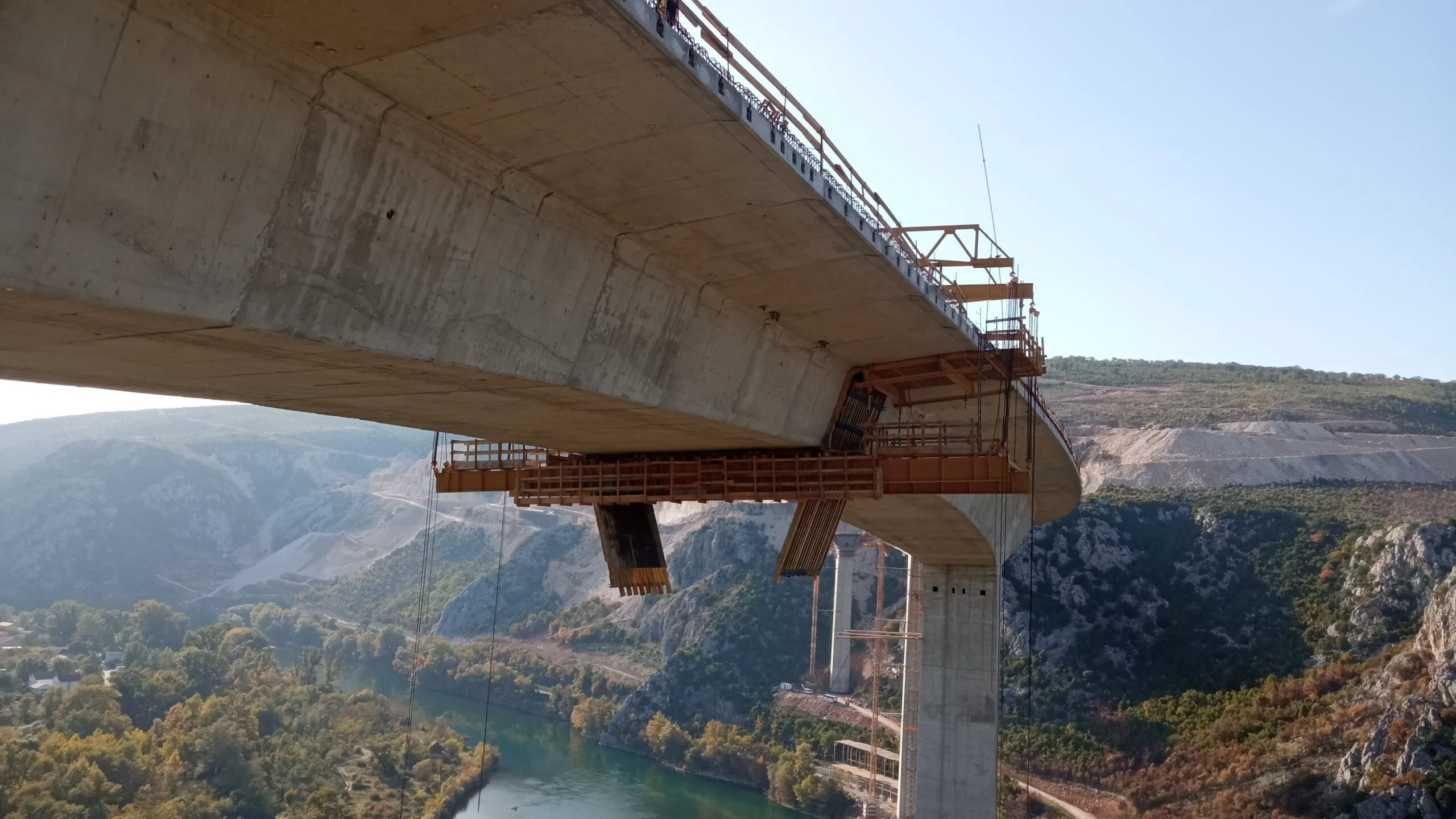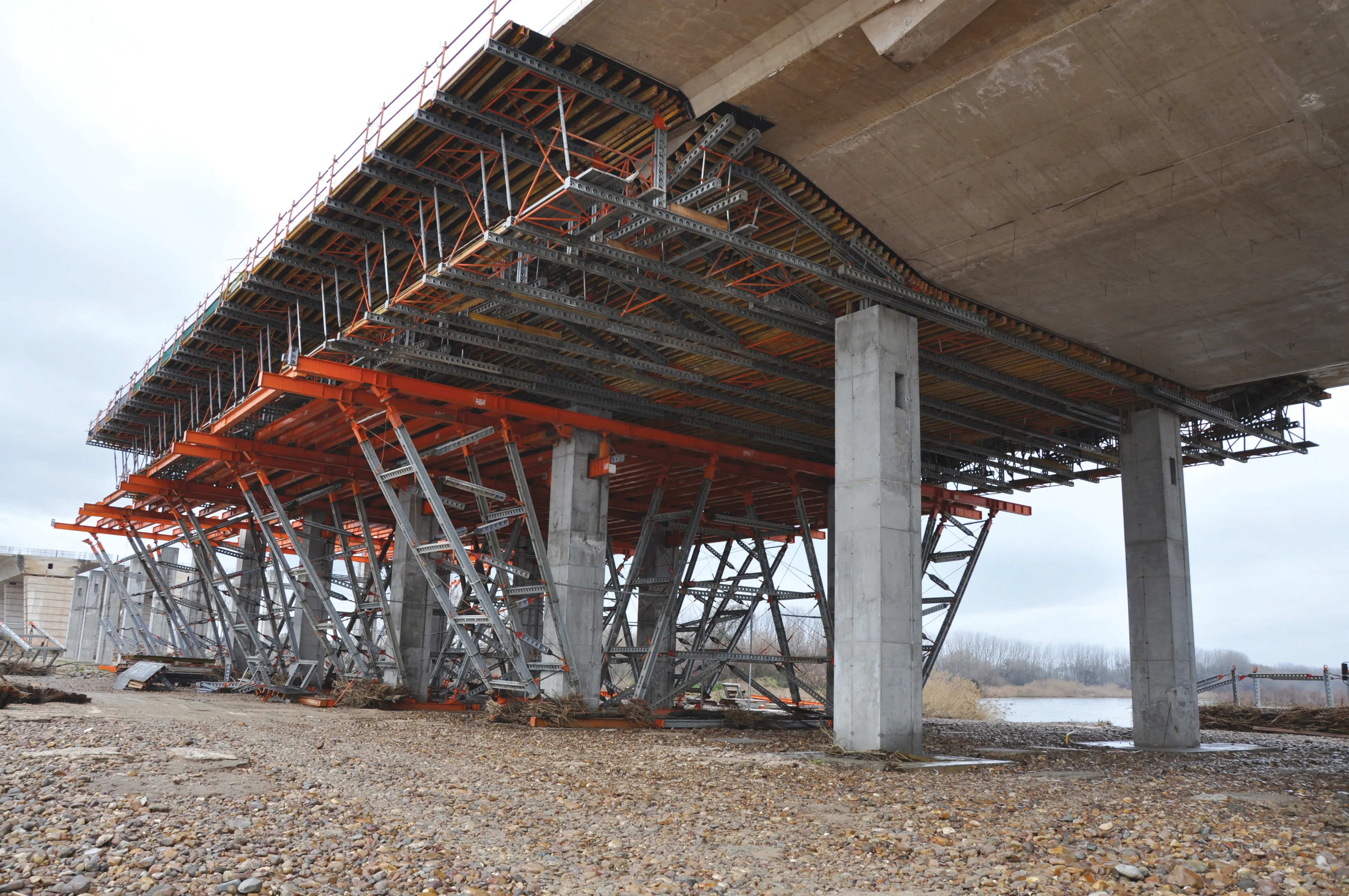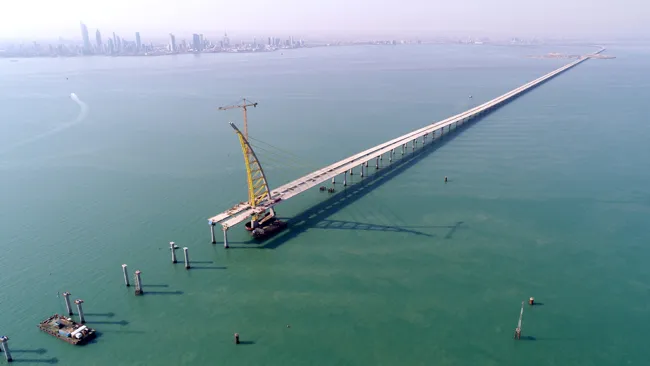
Contractors building the Pocitelj Bridge over the Neretva River in Bosnia are examining damage to a bridge segment that appeared during prestressing of cables.
A crack was discovered on a 4.75m-long segment of deck along the nearly 1km-long structure that rises 100m above the river, according to media reports. Few other details were given.
The bridge is being built by a consortium of Azerbajan construction group Azvirt and Chinese state-owned hydropower engineering and construction companies Sinohydro and Powerchina Roadbridge Group. Hering d.d. Široki Brijeg is a subcontractor and overall construction supervision of the entire Počitelj - Zvirovići motorway is by the Italian group IRD Engineering.
The client, JP Autocesta FbiH – Bosnia and Herzegovina’s motorways agency – has held meeting with the contractors to establish corrective work, the newspaper said. The agency also noted that remedying construction issues at the end of works on such complex structures was normal and all partners are cooperating fully to correct the problem.
In July, the Sarajevo Times reported that work on the final span had been completed allowing connection of the bridge to both banks of the river. Testing and finishing of the decks is now underway for an anticipated opening by the end of the year.
The Počitelj Bridge is the largest bridge on the entire pan-European Corridor 5c highway. The concrete bridge is designed as a continuous prestressed girder bridge with five spans of 147m in length and two connecting side spans of 105m. The box cross-section structure is built by the free cantilever construction method.
Around 38,000m³ concrete, 9,000 tonnes of reinforcement and 1,500 tonnes of prestressing cables were used. Meanwhile, around 20,000m² of asphalt and waterproofing will be installed along the 22m-wide deck in the coming period.
“With the near completion of activities on the Pocitelj – Zvirovici section and the start of construction work on the Prenj tunnel and the Mostar north – Mostar south section and the Kvanj – Buna tunnel, which we plan to contract this year, we are opening new perspectives for the business community and raising the economic potential of this part of Bosnia and Herzegovina (BiH) to a higher level,” said Denis Lasic, acting director of JP Autocesta FbiH.








